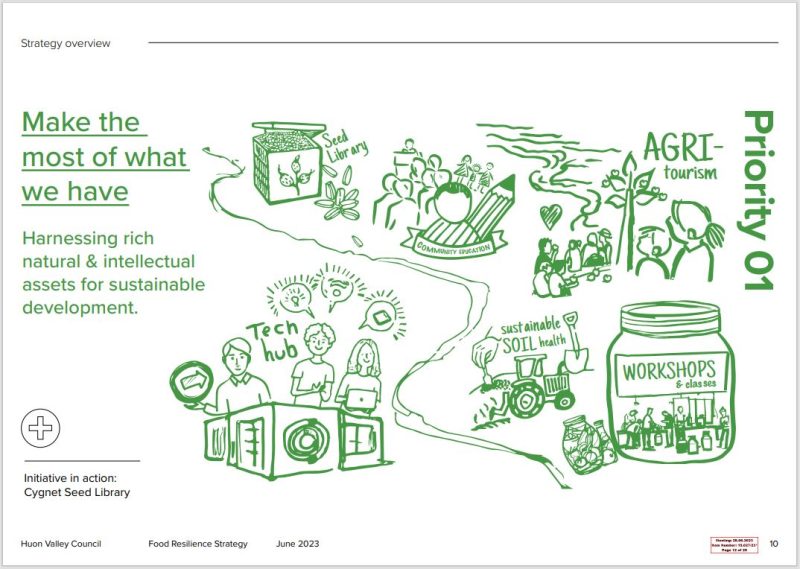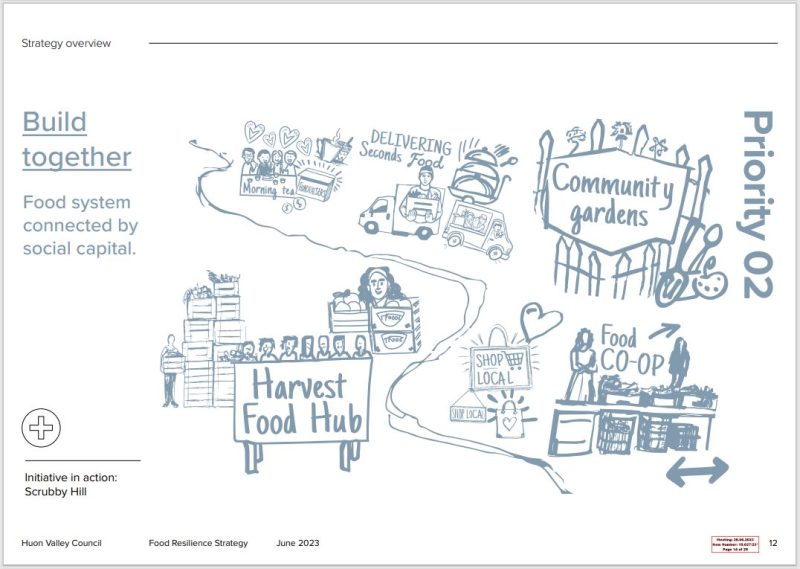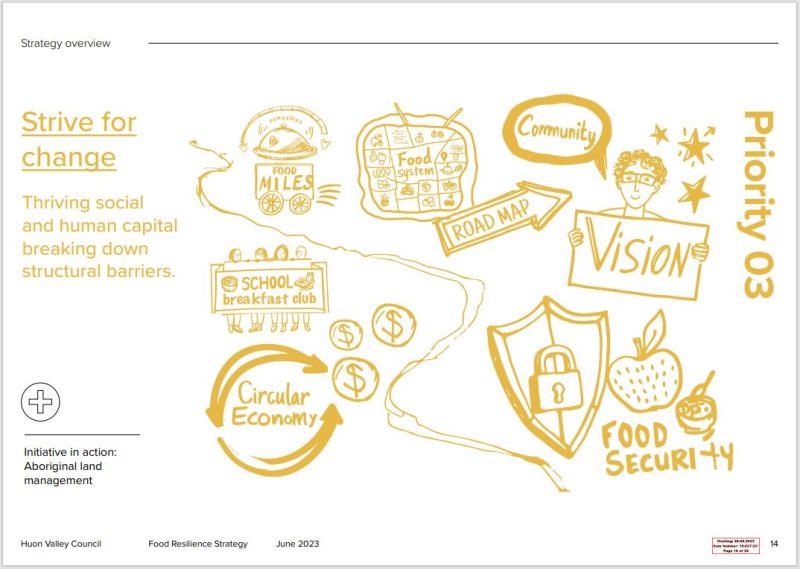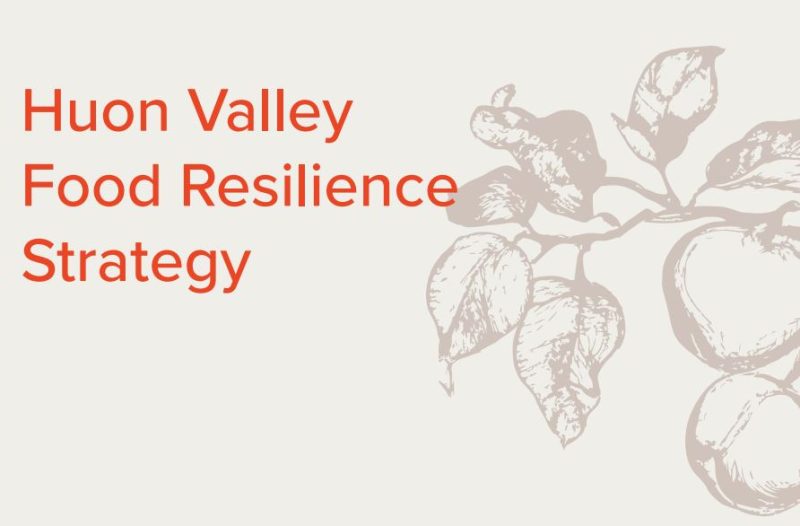Huon Valley Food Resilience Strategy endorsed
The Huon Valley Food Resilience Strategy has been designed to support advocacy and guide the growth of a vibrant and connected food system. It provides a framework for guiding and informing opportunities and proposes criteria for decision thinking and making.
The Food Resilience Strategy will help the Huon Valley Council improve coordination and collaboration among different sectors and levels of government where matters relate to the growth and production of food. It will also build on the existing efforts of businesses, community and other support agencies and services in the Huon Valley to support further initiatives and make the region more resilient.
The Covid-19 pandemic highlighted the fragility of our food systems at a global, state, and local level. All parts of the supply chain, from producers to consumers were impacted, demonstrating the importance of resilience at multiple levels.
To support pandemic recovery in the region, this project led to the development an innovative Food Resilience Strategy for the Huon Valley.
A key outcome of the strategy is the formation of a food coalition, where there will be high level policy advocacy for a more resilient food system at a local level.
The Strategy focuses on how resilient our food system is by considering the health and capacity of six key areas: financial, manufactured, intellectual, human, social, and natural capitals.
With the vision for the strategy being “To grow the capacity for resilience in the Huon Valley food system”, three priorities became apparent. These include:
Priority 01: Make the most of what we have – Harnessing rich natural and intellectual assets for sustainable development. Examples include seed libraries, community education through workshops and classes, agri-tourism.
Priority 02: Build together – A food system connected by social capital. Examples include shopping local, harvest time food hubs, community gardens.
Priority 03: Strive for change – Thriving social and human capital breaking down structural barriers. Examples include reducing food miles, circular economy, school breakfast clubs.
A short series of videos have been created to show practical examples of what each priority could look like within the community.
Priority 01 video: https://youtu.be/5EFkexH6ons
Visual representation:

Priority 02 video: https://youtu.be/uPFQVFwxkRA
Visual representation:

Priority 3: video still to be produced
Visual representation:

Thanks and acknowledgement is given to the Australian Government’s Building Better Regions Fund for funding this project.
View the Huon Valley Food Resilience Strategy here: Plans and strategies – OneDrive (sharepoint.com)



